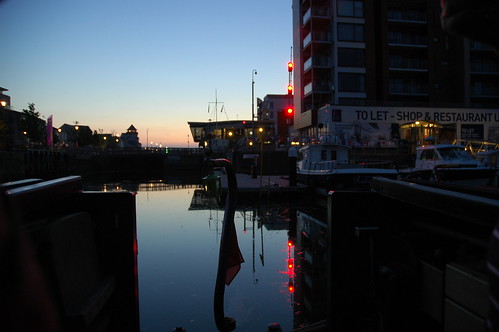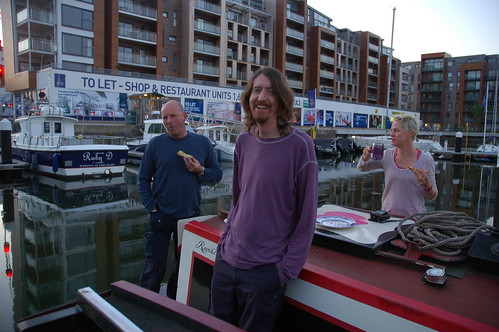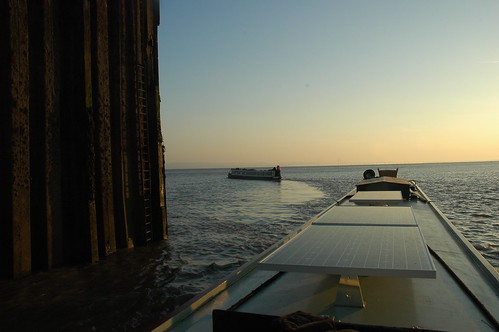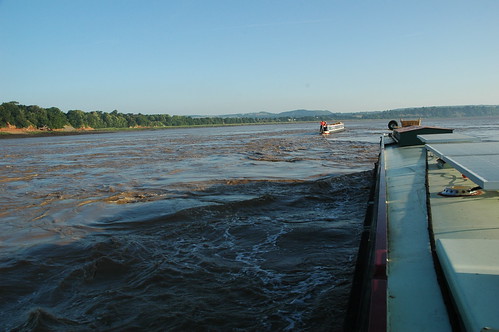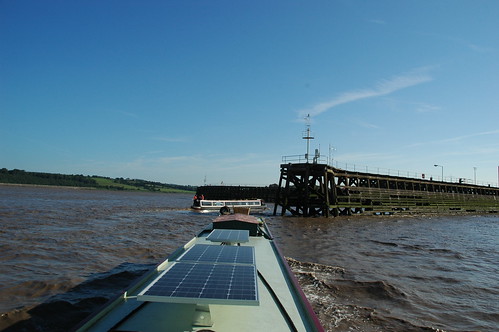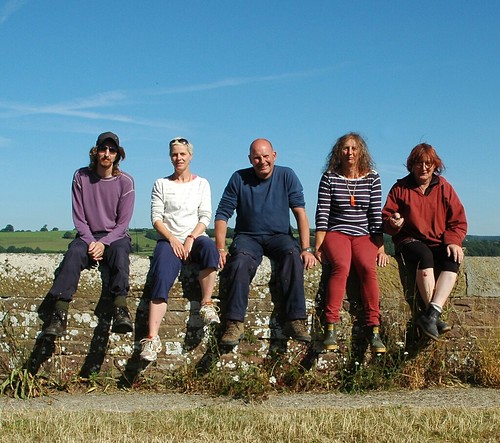We must have reached at least 65mph on that long downhill from the Thornbury motorway interchange. The Severn Bridge loomed ahead, and Katie had rummaged in my bag just in time to muster the toll.
There was a momentary faltering of the engine.
We exchanged glances. And carried on. "Faith et blind hope", I thought to myself.
Through the toll gate and ascending the long curve of the bridge, the engine faltered some more.
"Kick the bulkhead, will you?" I said.
Katie obliged. She's quite practiced at this. There was a time when the fuel pump was a bit unreliable, and was frequently revived with a judicious thumping on the bulkhead forward of the passenger seat.
"Well, that seems to help," I said.
"Certainly helps me," she replied. Katie is immune to the subtle charm of old Morrises.
We made it, and spluttered our way through Chepstow and over the old iron bridge, then up the steep hill and north to Tidenham, where the engine finally conked. I stripped down the carburettor; the petrol in the float bowl was clean and uncontaminated. The engine started again and we got to the campsite.
Katie and her friends were having a night in the wilds, to celebrate the end of their school year and their GCSEs. I was along as the obligatory adult, without whom they wouldn't be allowed on the campsite. I pitched my tent over the hill and just out of sight, and left them to it. They weren't going to do anything stupid. I walked in the forest and watched the deer.
Mal and Adrian came over the next morning to help with getting everyone home. I told Ade about the fuel problem. "I'll keep behind you; I've got the tow rope on board" he said. Ade is a reassuring chap to have around.
We got safely over the bridge again, and took the coast road to Avonmouth. The spluttering began again and got worse and worse, but we made it home. Just.
It was time to sort this out. I stripped down the fuel pump
One of the solenoid wires had broken, where it joins the connector to the points. So I soldered it back together.
This was a possible explanation for the intermittent working of the fuel pump, and for the way that it could be revived by a judicious thump. But you should be wary of obvious answers, as they may blind you to other problems.
I cleaned up the points, too; and reassembled the pump. It ticked gratifyingly loudly when I connected it up; but then petrol started pouring from the outlet hose.
The hose looked perfectly fine- it's armoured, which means it's wrapped in braided wire. But pull the wire sleeve off, and the rubber hose was found to be perished to heck!
...so that had to be replaced too.
Everything was now running well enough to go for a long drive. But coming home, there was that familiar faltering, just as I was approaching Bridge Valley Road, the long steep hill that comes up from the Avon Gorge to Clifton. Very nearly as undesirable a place for a breakdown as the Severn Bridge.
With some serious faltering, gunning of throttle and pulling over onto the pavement, we got home. But halfway through this performance, a new whining noise began from the engine bay, and the red charging light came on.
"O no, the alternator's thrown its hand in!" I thought, after the initial "O no, the engine's going to blow up" response that I most immediately have when something goes wrong.
I took the alternator off. The brushes were worn, but still in contact with the rotor. I put it back together. I tested voltages.
Voltage across the battery (engine off) 12.6V
Voltage across the battery (engine running) 12.1V
Voltage across the alternator 9.5V
I was now out of my depth, and rather than faff around I ordered a new alternator (£50, ouch), which arrived the next day. Someone on the
MMOC messageboard suggested that the combination of whining noise (which I suspected may have been a dodgy bearing) and electrical failure indicated a probable rectifier failure. So I'll test that out. It's a shame to throw away an alternator that can be made good with a £5 component.....
..the faltering this time round was caused by the fuel pump sucking air in; I put some PTFE tape around the supply pipe orifice, and tightened it back up good and hard. That was sorted.
And now the car's back up and running. Phew!


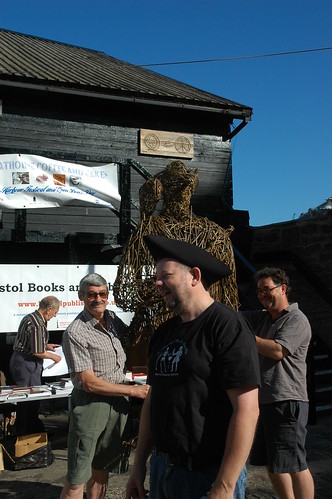


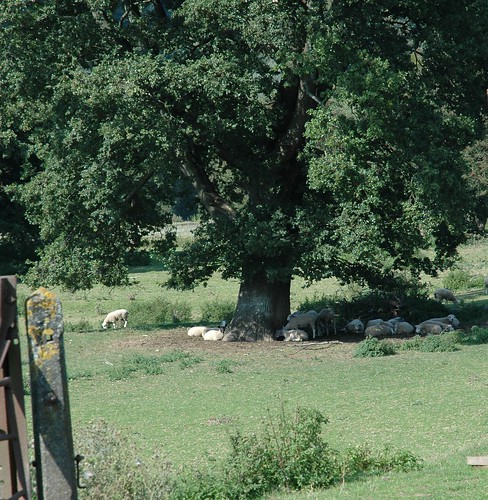
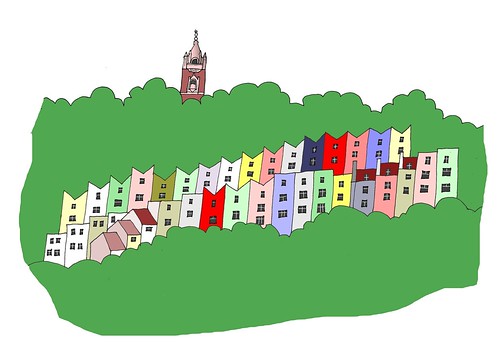





 T
T



